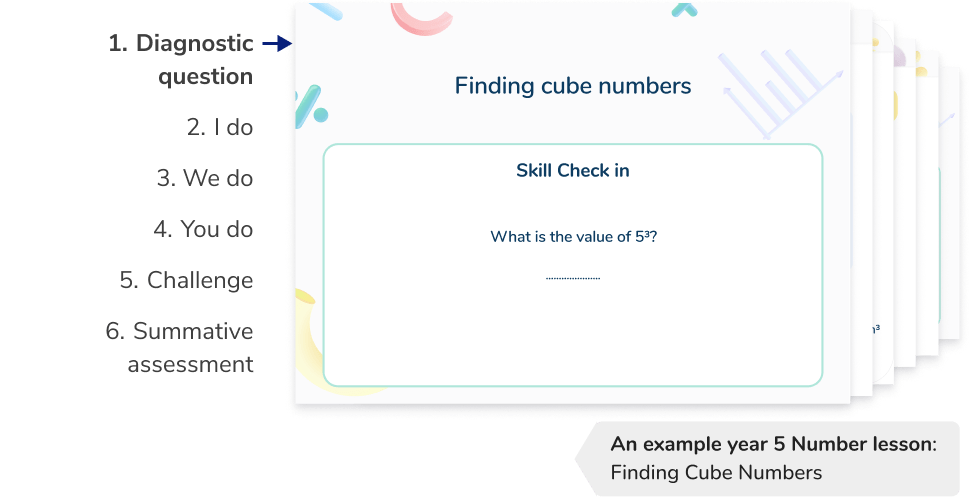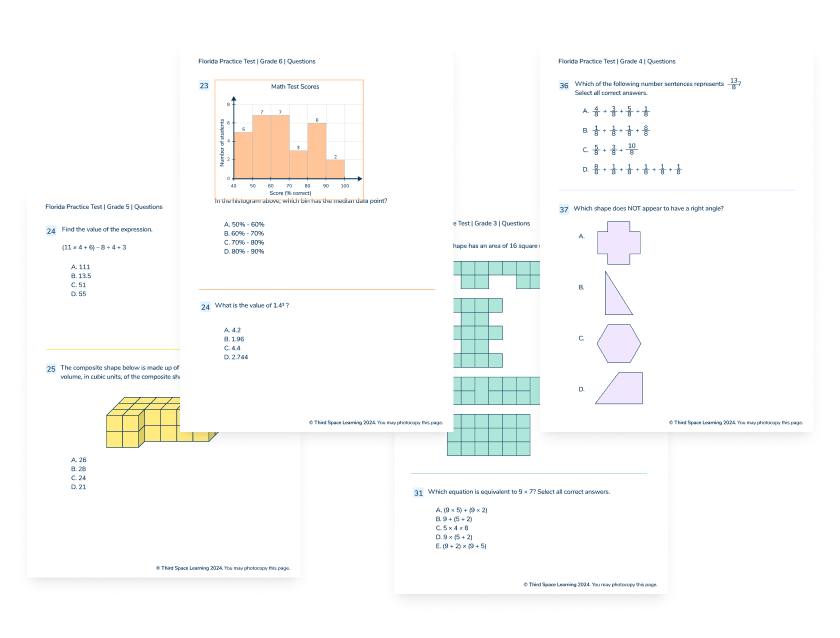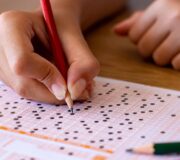The 6 Best Assessment For Learning Strategies And How To Make Them Work In Your Classroom
Assessment for learning strategies are not new in the education world, but they still have an important role to play in the classroom. Assessment for learning is key to effective learning and teaching.
First gaining popularity in the 1990s, researchers, including Paul Black and Dylan Wiliam, highlighted the benefits of the use of assessment strategies for learning, as opposed to summative assessment used as assessment of learning.
In this blog we will be exploring assessment for learning strategies by establishing what they are; why they are used; the impact they have on learning and practical advice on successful implementation in the classroom.
School Leaders Guide To Math Assessment
A guide to the different assessment types for elementary, middle and high school, with examples, strategies and free resources to use in your school.
Download Free Now!What are assessment for learning strategies?
Assessment for learning strategies are the range of strategies that teachers draw upon to assess learning within their teaching practice. These strategies aim to gather data on a students’ current level of understanding and any misconceptions. Teachers then use this valuable information as a form of formative assessment to adjust their teaching strategies, give specific feedback or even re-teach to ultimately drive the learning forward.
Adopting a range of approaches is key to ensuring assessment for learning (AFL) is successful and has the desired impact within the classroom. Assessment for learning examples include:
- Direct observation
- Questioning
- Feedback
- Self-assessment
- Peer-assessment
- The formative use of summative assessment
In this blog, we will look at each of these types of asessment and provide you with some examples for how you can incorporate each of them into your everyday classroom practice to support your teaching.
Why do we use assessment for learning strategies?
Assessment for learning is a key component of the teaching and learning process. Utilizing a range of strategies provides teachers with the information necessary to determine where the children are in their learning at any given moment and to identify any gaps which may prevent them progressing and moving forward.
AFL also enables children to take an active role in their own learning. With a greater understanding of the aims, children can understand what is needed to achieve success and are able to play a role in moving their learning forward.
If these assessment checks aren’t made, then teachers and students will not have an accurate picture and understanding of where they are or what they need to do in order to progress further.

Meet Skye, the voice-based AI tutor making math success possible for every student.
Built by teachers and math experts, Skye uses the same pedagogy, curriculum and lesson structure as our traditional tutoring.
But, with more flexibility and a low cost, schools can scale online math tutoring to support every student who needs it.
Find out moreWhat impact do these AFL strategies have on the learner?
Several researchers have found that adopting a range of assessment for learning strategies can have a significant impact on the learner.
Black and Wiliam published their review of assessment practices in their 1998 publication, Inside the Black Box: Raising Standards Through Classroom Assessment. Through this research, they investigated what was happening in classrooms and discovered that students who learn in a formative way achieve much better results than those who do not.
John Hattie ranked feedback strategies 10th out of 150 factors that bring about significant improvements in learner outcomes, particularly if the strategies involved feedback about the learner’s own work.
6 Assessment For Learning Strategies
There are six key assessment for learning strategies. Here, we focus on what these are and provide some examples for how each strategy can be incorporated into everyday learning within the classroom:
1. Direct observation
With direct observation, the teacher observes small groups or pairs of children working on a task. It can be implemented at any point during the lesson.This form of assessment requires no direct participation from the students who continue the lesson and task as normal, often unaware they are in fact carrying out an assessment activity.
An example of this form of assessment is starting a math lesson with a challenge, with no prior teaching. This is the perfect opportunity to observe what students already know and how they are able to apply their previous learning to cope with a new situation.

At the start of every Third Space Learning one-on-one math tutoring lesson, Skye – our voice-based AI math tutor built by teachers and math experts – presents students with a short formative assessment and adapts instruction in real time to ensure each learner receives the right level of support. Depending on the student’s needs, this might mean beginning with guided, step-by-step solutions and explanations or moving straight to independent practice and more challenging questions if they’re ready. Throughout the lesson, Skye uses formative assessment to identify misconceptions and adapt hints accordingly.
2. Questioning
Questioning can be an effective assessment tool in a teacher’s armory when it is used well. However, the Assessment Reform Group (ARG) found that questions used by teachers were sometimes not challenging enough.
Questions need to encourage children to engage in critical thinking and share their ideas, as opposed to always writing them down.
Effective questioning enables teachers to:
- provide instant feedback to students;
- address misconceptions;
- close gaps as they arise.
Examples of questioning:
- Hinge questions
Whole class questioning - Round the room questioning
- Quizzes and polls
- Think-pair-share
- Use of mini whiteboards to answer questions
3. Feedback
For AFL to be effective and have an impact, teachers need to be doing more than simply observing and asking questions.
The information the teacher gathers during this stage needs to be used well to identify where the learners are, any misconceptions they have and the next steps they may need to take. Effective feedback is key to ensuring that assessment for learning strategies actually have an impact on student understanding and learning outcomes.
There are two main types of feedback:
- evaluative (grades or brief comments)
- descriptive feedback (helpful comments and next steps)
Descriptive feedback provides children with more detailed and useful information than evaluative feedback. It contains specific information on what they have done correctly, but also how to improve their learning.
Research has found the impact of descriptive feedback to be greater than simply marking answers right or wrong. This form of feedback has been found to be beneficial as it clarifies learning criteria and highlights the steps a student needs to make to work towards this.
One example of this form of feedback is when teachers provide feedback to children in the format of two stars and a wish. However, this doesn’t need to be written and doesn’t need to be time consuming. Consider implementing whole class feedback to reduce workload and ensure feedback is helpful.
4. Self-assessment
Self evaluation and self-assessment strategies are important for ensuring AFL is impactful, as with these, children have greater involvement with their own learning and learning tasks, while also promoting their metacognition (the ability to think about their thinking) and building their collaborative learning skills.
Self-assessment examples include:
- Traffic lights
- Rating scales
- 3-2-1 Countdown:
- What 3 things you didn’t know before?
- What 2 things surprised you about this lesson / topic?
- What is 1 thing you want to start doing with what you have learned?
5. Peer-assessment
Peer assessment is a useful form of AFL as children often are more accepting of observations about their work when made by a peer, compared to when made by a teacher. The language used by their peers can make it more accessible to them. This is obviously reliant on there not being conflict and students working well together.
Peer assessment examples include:
- Two stars and a wish
- Peer assessment cards
- Children are provided with a list of targets or learning goals to assess their partner’s work with. For each target on the sheet, the student Red-Amber-Green rates how successful their partner has been.
6. The formative use of summative assessment
There is a common misconception that formative assessment is made up of quizzes and polls, while summative assessments are end of year exams and tests. But it is important to note that it is not the form of the assessment that makes it either formative or summative, but instead is how the feedback is used.
This means that traditionally formative assessments can be reworked to be used formatively.
For example:
- DIRT (Designated Improvement and Reflection Time) on tests and exams: Allow students to review their tests and give detailed feedback and activities to complete to improve their answers.
- Students create their own exam questions: this encourages them to think deeply about their learning and what information is important from that lesson or topic. Involving students like this also increases motivation, with students getting enjoyment out of having an active role in their own assessment and that of their peers.
Read more: Formative and summative assessment
Tips for integrating AFL strategies into your classroom practice
- Make sure success criteria and learning objectives are not only clear, but also understood by students.
- Use a range of questioning strategies to deepen understanding at all stages of the lesson.
- Ensure feedback is clear, encourages learners to act on it and has an impact on students’ performance.
- Include a range of strategies for enabling students to be active participants in their own learning, through the use of peer and self assessment.
- Make formative use of summative tests to highlight any gaps and learning needs, in addition to giving the students an opportunity to have a direct impact on their own progress.
- Evaluate the impact of any assessment for learning strategies you employ. If they are not having an impact, look at what could be done to ensure they do.
- Leaders need to ensure that teachers have the knowledge to implement AFL successfully into their learning environment, through on-going support and effective professional development.
For assessment for learning to have an impact, a range of strategies need to be incorporated. The use of these strategies should be embedded in teaching practice across the school and not as an add-on.
If teachers are only carrying out half of the assessment for learning process, for example, capturing and recording information gathered from assessment but not utilizing it to improve student learning, then it is meaningless and has been reduced to a checkbox exercise.
To drive learning forward, teachers need to be using the information gathered effectively to ensure the progress of all students.
Assessment for learning strategies FAQs
An example of assessment for learning is after a teaching session, a teacher gives her students an exit ticket to elicit evidence of and to evaluate learning. The teacher collects these and reads the responses. She evaluates their understanding and identifies a key misconception in many students’ responses which she addresses in her next lesson, providing students with targeted support and feedback.
Assessment for learning is an example of formative assessment as it is used to inform teaching.
AfL is an example of formative assessment.
Do you have students who need extra support in math?
Skye—our AI math tutor built by experienced teachers—provides students with personalized one-on-one, spoken instruction that helps them master concepts, close skill gaps, and gain confidence.
Since 2013, we’ve delivered over 2 million hours of math lessons to more than 170,000 students, guiding them toward higher math achievement.
Discover how our AI math tutoring can boost student success, or see how our math programs can support your school’s goals:
– 3rd grade tutoring
– 4th grade tutoring
– 5th grade tutoring
– 6th grade tutoring
– 7th grade tutoring
– 8th grade tutoring
The content in this article was originally written by former primary school Deputy Head Teacher, Emma Johnson and has since been revised and adapted for US schools by elementary math teacher Christi Kulesza.







